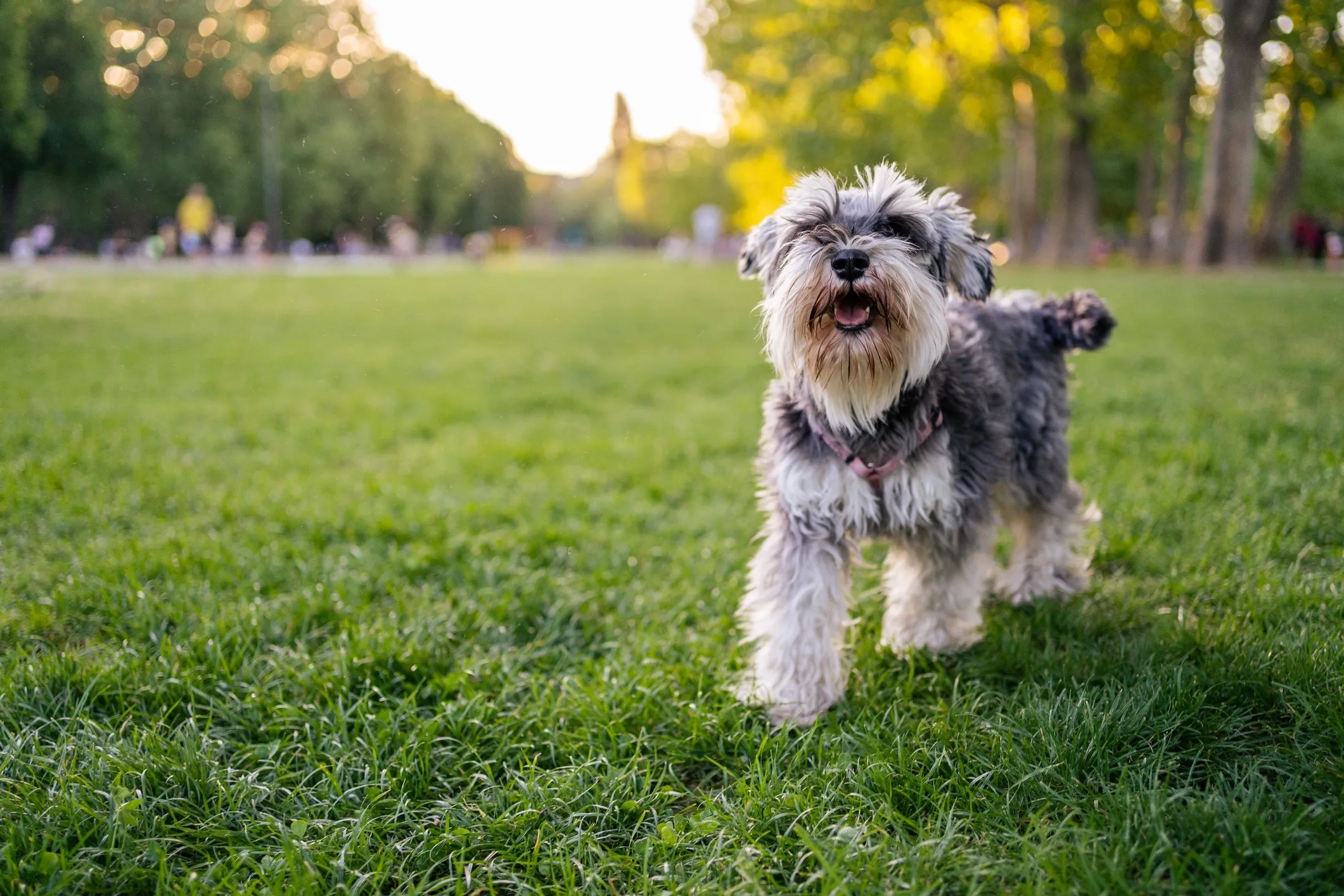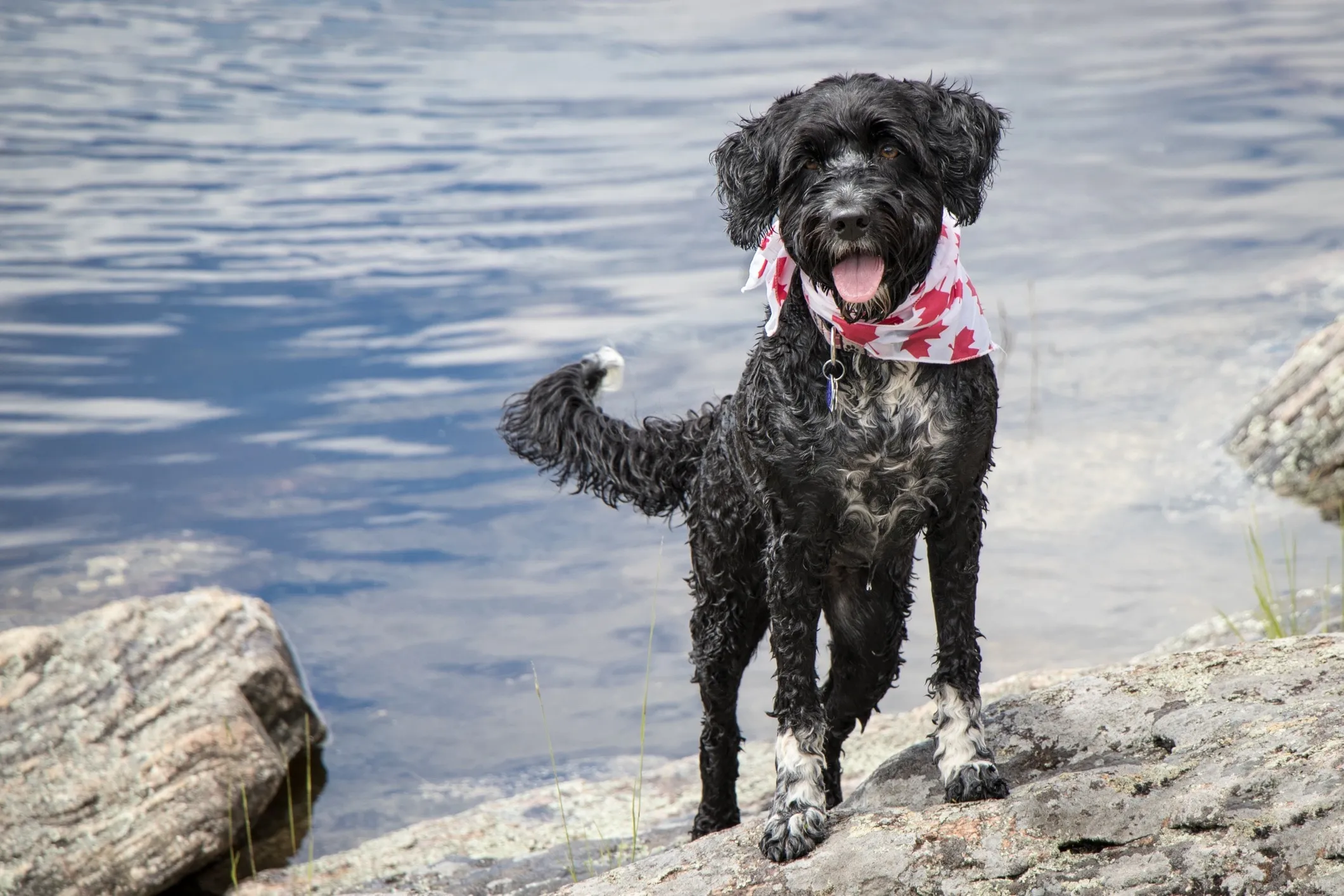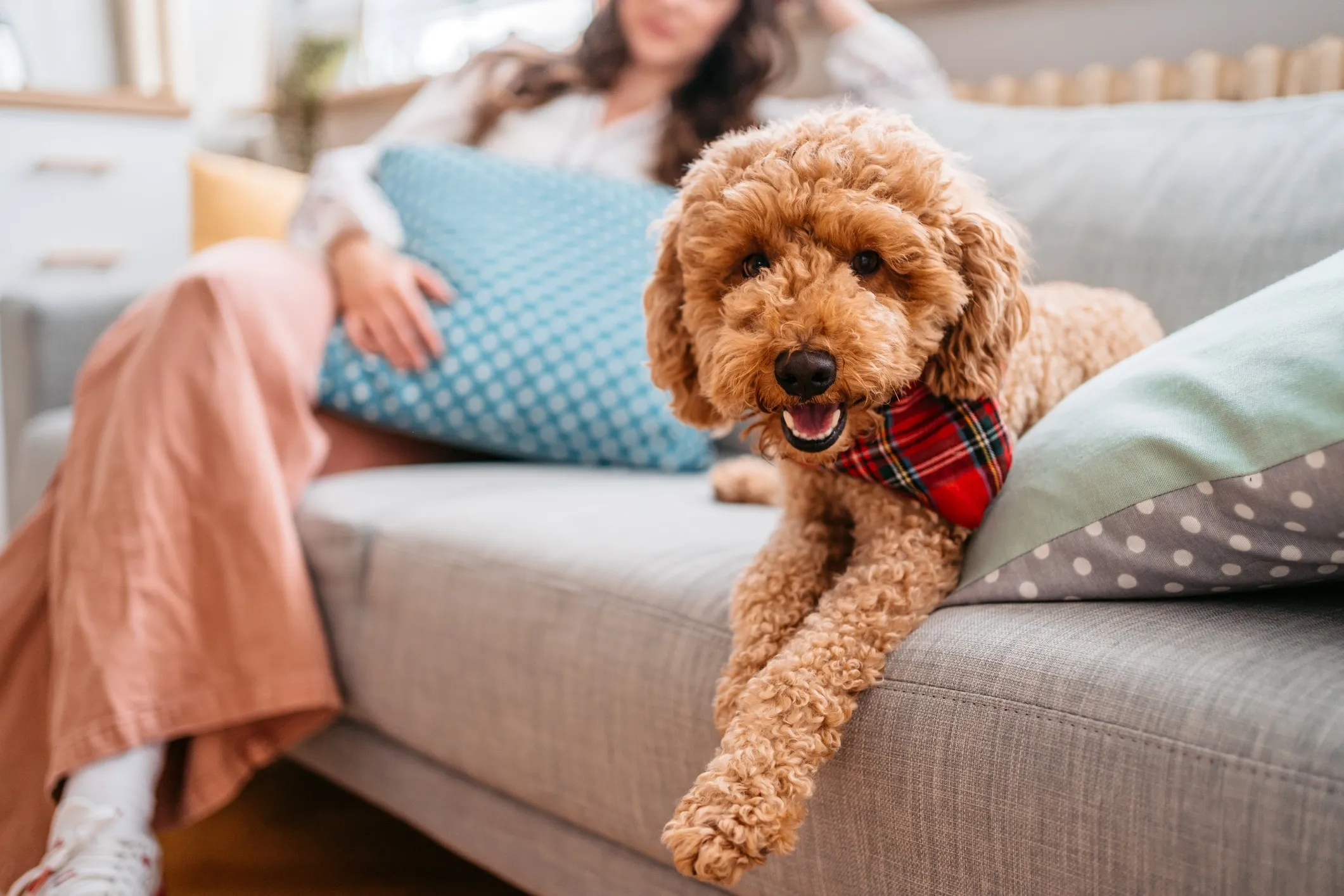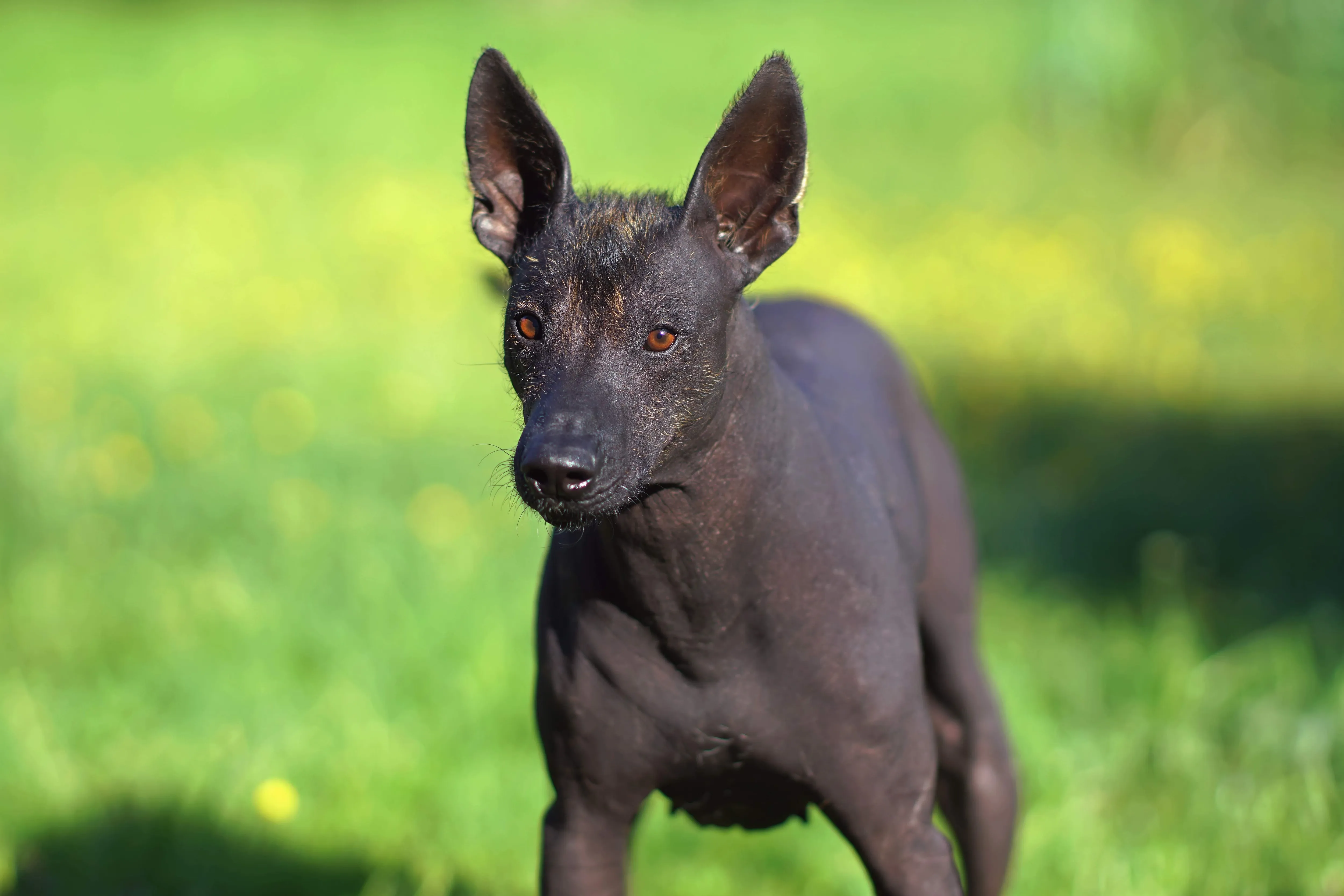Many dog lovers dream of bringing a furry friend into their home, but for individuals with allergies, this often remains a challenge. The good news is that certain dog breeds are often referred to as “hypoallergenic,” suggesting they produce fewer allergens than others. If you’re searching for images of dogs that don’t shed and want to learn more about these special companions, you’ve come to the right place. While no dog is entirely allergen-free, these breeds are specifically known for their low-shedding coats, which can significantly reduce the presence of dander—a common trigger for allergic reactions. This comprehensive guide will explore what makes a dog hypoallergenic, highlight popular low-shedding breeds, and offer essential tips for living harmoniously with your new canine family member, ensuring a comfortable environment for everyone.
Understanding the concept of a hypoallergenic dog is the first step toward finding the perfect pet for an allergy-sensitive household. It’s not just about how much hair a dog loses, but the type of coat and how it manages dander, skin flakes, saliva, and urine—all of which contain proteins that can cause allergic responses. For families seeking a protective companion, exploring options like a best medium to large size family protection dog that also aligns with hypoallergenic needs can be a fantastic combination.
Understanding Hypoallergenic Dogs: What Does It Mean?
While the term “hypoallergenic” suggests a complete absence of allergens, it’s crucial to understand that no dog is 100% allergen-free. All dogs produce allergens, primarily found in their skin (dander), saliva, and urine. Hypoallergenic dogs are typically breeds that shed very little or have hair-like coats that trap dander, rather than releasing it into the environment. This characteristic minimizes the spread of allergens, making them a more suitable option for some people with sensitivities.
Even though these dogs may produce fewer allergens in their hair, they still carry allergens in their skin, saliva, and urine, which can trigger symptoms like coughing, itching, or wheezing in highly sensitive individuals. The key is that their coat type often means less dander and saliva are distributed throughout the home. Regular grooming and a clean living environment become even more important when living with a low-shedding dog to further reduce potential triggers.
Top Dog Breeds That Don’t Shed
Many dog breeds are considered “hypoallergenic” due to their low-shedding coats. These breeds can be a great fit for individuals with dog allergies, offering the joy of companionship with fewer allergic reactions. Here are some of the most popular breeds known for their minimal shedding, often accompanied by pictures to help you visualize your potential new family member.
1. Poodle
The Poodle comes in three distinct sizes—Standard, Miniature, and Toy—all renowned for their hypoallergenic qualities. These intelligent dogs are famous for their curly, low-shedding coats that are more like hair than fur. Originally bred for hunting, especially the Standard Poodle, they are highly trainable and make excellent family pets. Their unique coat requires diligent grooming, including frequent brushing to prevent matting and tangling. Without regular care, their beautiful curls can become knotted and uncomfortable for the dog.
 White Poodle walking through green grass
White Poodle walking through green grass
Poodles are not only known for their elegance but also for their active nature and need for mental stimulation. They thrive on companionship and enjoy participating in various dog sports and activities. Their adaptability to different living situations, coupled with their minimal shedding, makes them a top choice for many allergy sufferers.
2. Yorkshire Terrier
Little Yorkies are charming, spunky, and affectionate dogs known for their beautiful, silky, hair-like coats that shed minimally. These small hypoallergenic dogs adapt well to various living arrangements, from spacious homes to cozy apartments, provided they receive ample attention and love from their families. Their confident personalities often belie their small stature, making them wonderful, lively companions.
Yorkshire Terriers require regular grooming to keep their long coats free of tangles and mats. Daily brushing is often necessary, and many owners opt for shorter “puppy cuts” to make maintenance easier. Despite their delicate appearance, Yorkies are quite robust and enjoy playful interactions.
3. Shih Tzu
Another small hypoallergenic breed, the Shih Tzu, is an ancient companion dog celebrated for its lush, flowing coat and friendly temperament. These charming dogs were originally bred to be lap warmers for Chinese royalty and retain their affectionate nature. Their thick, double coat is low-shedding but does require consistent grooming to prevent matting, including daily brushing.
 Brown and white Shih Tzu lying on a living room floor
Brown and white Shih Tzu lying on a living room floor
Due to their flat faces, Shih Tzus can be susceptible to certain health issues, such as overheating and breathing problems, and are prone to tear stains around their eyes. Regular eye cleaning can help manage tear stains and maintain their overall health. Despite these considerations, their loving and outgoing personalities make them popular family pets.
4. Miniature Schnauzer
The Miniature Schnauzer is the smallest of the three Schnauzer breeds, typically standing no more than 14 inches tall and weighing between 10–20 pounds. These intelligent dogs possess a wiry, low-shedding coat that makes them a good option for allergy sufferers. Their adaptability allows them to thrive in diverse living environments, from urban apartments to larger homes, as long as they receive at least an hour of exercise daily.
 Salt and pepper Miniature Schnauzer wearing a pink harness in a park
Salt and pepper Miniature Schnauzer wearing a pink harness in a park
Miniature Schnauzers are known for their spirited personalities, loyalty, and trainability. They are excellent watchdogs and can be quite vocal. Their distinct beard and eyebrows give them a charming, alert expression. Regular grooming, including professional stripping or clipping, is necessary to maintain their coat’s texture and appearance.
5. Standard Schnauzer
The Standard Schnauzer shares many appealing traits with its miniature counterpart but in a slightly larger package, weighing up to 45 pounds. These dogs also have a wiry, low-shedding coat. Standard Schnauzers are highly intelligent, energetic, and thrive on activity. They love long walks, games of fetch, and engaging with puzzle toys that challenge their minds. Their robust build and playful nature make them excellent companions for active families.
6. Giant Schnauzer
Among the largest hypoallergenic dog breeds, Giant Schnauzers can reach over 27 inches in height and weigh up to 85 pounds. Like their smaller relatives, they possess a dense, wiry coat that sheds minimally. These impressive dogs require significant exercise to stay happy and well-behaved, including extensive walks, runs, hikes, and active games of fetch. Their powerful build and protective instincts make them excellent guardians, but they also require consistent training and socialization from an early age.
7. Bichon Frise
The Bichon Frise is a small, playful, and affectionate dog with a fluffy, curly, low-shedding coat. Their charming personalities and highly intelligent nature make them quick learners, easily mastering basic training commands with positive reinforcement. Bichons enjoy entertaining their families with tricks and thrive on close companionship. They are known for their cheerful disposition and adaptability to various living situations.
8. Chinese Crested
The Chinese Crested is a unique small breed known for its distinctive appearance. It comes in two varieties: the Hairless, with smooth skin and tufts of hair on the head, tail, and paws, and the Powderpuff, which is covered in a long, silky coat. Both varieties are considered hypoallergenic. These dogs are playful, affectionate, and make wonderful companions. The Hairless variety requires skin care to protect against sunburn and dryness, while the Powderpuff needs regular grooming to keep its coat beautiful.
9. Portuguese Water Dog
This medium-sized breed was originally bred to assist fishermen in Portugal, thanks to its exceptional swimming abilities. The Portuguese Water Dog’s thick, curly coat is low-shedding, making it a popular choice for allergy sufferers. They are intelligent, highly trainable, and friendly dogs. These energetic pups require regular, vigorous exercise, including swimming, to keep them happy and healthy. Their love for water makes games involving floating toys particularly enjoyable for them. Families looking for large dog breeds pictures and names that include a highly active, low-shedding option should certainly consider the Portuguese Water Dog.
 Black and white Portuguese Water Dog wearing a red maple leaf bandana in front of water
Black and white Portuguese Water Dog wearing a red maple leaf bandana in front of water
10. Labradoodle
A popular crossbreed, the Labradoodle is a mix between a Labrador Retriever and a Poodle. Originally bred to be a hypoallergenic service dog, Labradoodles are intelligent, friendly, and make excellent family pets. Their coat can vary, but many inherit the Poodle’s low-shedding qualities. They are highly trainable and gentle, especially when well-exercised and socialized from an early age. Labradoodles require regular grooming to prevent their coats from matting.
11. Goldendoodle
Goldendoodles are another popular “doodle” dog, resulting from a cross between a Golden Retriever and a Poodle. Like Labradoodles, they are known for their low-shedding coats, friendly nature, and high intelligence. While many exhibit the classic golden coat from their Golden Retriever parent, Goldendoodles can come in a variety of colors and textures. They need frequent grooming with a slicker brush to prevent mats and tangles, maintaining their beautiful appearance.
 Goldendoodle lying on a couch with a person sitting in the background
Goldendoodle lying on a couch with a person sitting in the background
Goldendoodles are cherished for their gentle and patient demeanor, making them wonderful companions for families with children and other pets. Their playful spirit and eagerness to please also make them highly trainable and enjoyable to live with.
12. Lagotto Romagnolo
Lagotto Romagnolo dogs were originally bred as water retrievers, and their curly, woolly coats protected them from cold waters. While less common than some other hypoallergenic breeds, Lagotti Romagnoli (the plural form) are known to be good with children and other pets, making them excellent family dogs. Their charming personalities and moderate energy levels require consistent exercise and mental stimulation.
13. Affenpinscher
Affenpinschers are small hypoallergenic dogs with a distinct “monkey-like” appearance. Their dense, wiry coats produce fewer allergens compared to many other breeds. However, this coat requires significant care, including regular at-home brushing and a process called “stripping,” where the hair is removed by the root rather than being trimmed. This unique grooming helps maintain the coat’s texture and reduces shedding.
14. Irish Water Spaniel
Friendly, intelligent, and highly trainable, Irish Water Spaniels are another water dog breed, originally used for retrieving game. Their thick, curly, low-shedding coat is always liver (brown) in color and requires regular grooming to keep it in top condition. With a high energy level, Irish Water Spaniels need substantial exercise to remain happy and healthy, making them ideal for active individuals or families who enjoy outdoor activities.
15. Aussiedoodle
An Aussiedoodle is a cross between an Australian Shepherd and a Standard or Miniature Poodle. These hypoallergenic dogs are exceptionally smart and energetic, inheriting these traits from both parent breeds. Due to their high intelligence and energy, they can become destructive if bored, highlighting the importance of plenty of exercise and mental stimulation through enrichment toys like treat dispensers. Their coats usually require regular brushing to prevent matting.
16. Bolognese
Bolognese dogs are cute, fluffy, white hypoallergenic dogs that originated in Italy. They boast a long, soft, white coat that, despite its characteristic messy appearance, requires extensive grooming to prevent tangles and mats. These playful and easygoing pups are known for getting along well with children and other pets and can adapt comfortably to various living situations, making them excellent apartment dogs.
17. Maltese
Another small hypoallergenic dog, the Maltese, is famous for its luxurious, silky white coat. Maltese make affectionate and playful companions for pet parents who are prepared to keep up with their significant grooming needs, especially if the owner prefers a long coat. To simplify grooming, many owners opt for a shorter “puppy cut” using dog hair grooming clippers. Their small size and gentle nature make them ideal lap dogs.
18. Soft Coated Wheaten Terrier
The Soft Coated Wheaten Terrier is a medium-sized Irish breed. As its name suggests, this dog has an incredibly soft, silky coat that sheds minimally. Being terriers, Wheatens maintain a high energy level throughout their lives and require ample exercise and mental stimulation to ensure they are well-behaved. Their joyful and friendly demeanor makes them popular family pets, known for their “Wheaten greetin'”—an enthusiastic welcome for their loved ones.
19. Coton de Tulear
Originating in Madagascar, the Coton de Tulear is a small hypoallergenic breed known for its easygoing and cheerful disposition. Their soft, cotton-like coat sheds minimally but needs regular grooming to prevent matting. Their good nature makes them well-suited for families with children and other pets, especially when proper introductions are facilitated. Cotons thrive on companionship and are happiest when involved in family activities.
20. Schnoodle
The Schnoodle is a unique doodle breed that combines two hypoallergenic dog breeds: the Schnauzer and the Poodle. Their coat can be curly or wavy, depending on the traits inherited from their parents, but it consistently remains low-shedding. Schnoodles are intelligent, playful, and affectionate, making them versatile and loving family members. Their grooming requirements are similar to other low-shedding breeds, necessitating regular brushing.
21. Bedlington Terrier
Often described as “a lamb in dog’s clothing,” the Bedlington Terrier is a small, curly-haired breed distinguished by its unique topknot hairdo and pom-pom ear tufts. This dog thrives on human companionship and can develop separation anxiety if left alone for extended periods. Monitoring their activity with a dog camera can help track and manage such anxieties. Their gentle nature and striking appearance make them truly unique pets.
22. Xoloitzcuintli
Mexican Hairless Dogs, or Xoloitzcuintli, are one of the oldest and rarest dog breeds. This ancient breed comes in three sizes (toy, miniature, and standard) and can be either hairless or covered in a short, velvety coat. Both the hairless and short-coated Xolos are considered hypoallergenic. They are known for being calm, loyal, and attentive, forming strong bonds with their families.
 Black Mexican Hairless Dog standing in green grass
Black Mexican Hairless Dog standing in green grass
The unique appearance of the Xoloitzcuintli makes them stand out, and their minimal grooming needs (for the hairless variety, skin care is essential) appeal to many. They are also incredibly robust and healthy, with a long lifespan, making them a devoted companion for years to come.
23. Whoodle
When a Soft-Coated Wheaten Terrier is crossed with a Poodle, the result is a Whoodle: a friendly dog that sheds very little. Whoodles inherit intelligence and an affectionate nature from both parent breeds. They are energetic and playful, making them great companions for active individuals or families. Their soft, wavy to curly coat requires regular brushing to prevent tangles.
24. Bernedoodle
Bernedoodles are a crossbreed between Bernese Mountain Dogs and Poodles. Their friendly, affectionate nature and gentle demeanor make these large hypoallergenic dogs a popular choice for families with children and other pets. While they require plenty of exercise to stay active and happy, their loving disposition ensures they integrate well into family life. Their coats vary and need consistent grooming.
25. Shorkie
Another cross between two hypoallergenic dogs, the Shorkie is a mixed breed created from Shih Tzu and Yorkshire Terriers. They combine the best traits of both breeds: small, playful, and friendly. Like most dogs on this list, Shorkies require dedication to a regular grooming routine to maintain their fine, silky coats and prevent matting. They thrive on attention and are often very adaptable.
26. Afghan Hound
Afghan Hounds are renowned for their long, flowing coats and slender, elegant builds. These pups are built for speed and are among the fastest dog breeds in the world. While loving toward their families, Afghan Hounds can be aloof with strangers, necessitating early and consistent socialization. Their magnificent coats require extensive daily grooming to prevent tangles and mats, making them a high-maintenance breed in terms of upkeep.
27. Barbet
The Barbet, pronounced “bar-bay,” is a cheerful dog with a shaggy, woolly coat. The name, derived from the French word barbe (beard), refers to the dog’s characteristically hairy chin. This large hypoallergenic dog loves to swim, thanks to its protective curly coat. To keep a Barbet’s coat in good condition, especially after swimming, it should be brushed with a slicker or pin brush two to three times a week. Barbets are known for being friendly, intelligent, and highly adaptable.
28. Shih-Poo
The Shih-Poo mixed breed is a cross between a Shih Tzu and a Poodle, most commonly the Toy Poodle. This small pup can adapt well to almost any living situation, provided they receive about 30 minutes of exercise and a good brushing session every day. Shih-Poos are affectionate, playful, and eager to please, making them delightful companions. Their coat type can vary but is generally low-shedding.
29. Peruvian Inca Orchid
Peruvian Inca Orchids, though rare, are considered hypoallergenic due to their nearly hairless bodies. They are an ancient dog breed, the national dog of Peru, and come in three sizes (small, medium, and large). These dogs are known for being agile, fast, and protective. Like the Chinese Crested, their hairless skin requires protection from the sun and cold, while the coated varieties have a short, smooth coat.
30. Malshi
As a cross between the Maltese and Shih Tzu, the Malshi is a happy, small hypoallergenic dog. They thrive when their favorite humans are close to them and need close companionship to be content. Malshis are known for their gentle and loving nature, making them excellent lap dogs. Their soft, flowing coat requires regular grooming to prevent matting and keep them looking their best.
Living Happily with a Low-Shedding Dog
Bringing a low-shedding dog into your home is a fantastic step towards managing allergies while enjoying canine companionship. However, it requires a commitment to specific care routines and maintaining a clean environment.
Consistent Grooming is Key
Hypoallergenic dogs, despite their low-shedding nature, often require extra care and maintenance to ensure a clean and allergen-minimized environment. Regular grooming and bathing are essential for keeping their coats clean and reducing dander. Ideally, dogs should be groomed every week and bathed every four to six weeks. Using a specialized shampoo or dander remover can further help minimize allergens. Many low-shedding breeds also necessitate regular trimming, hand-stripping, or other professional grooming upkeep. Factor in the budget for regular professional grooming, or be prepared to learn how to groom your pup at home. This consistent care directly contributes to fewer allergens being released into your living space.
Maintain a Clean Home Environment
Minimizing allergens extends beyond just your dog’s grooming. Maintaining a clean and tidy home is crucial. Regular vacuuming, dusting, and washing of bedding are vital to reduce accumulated pet dander. Utilizing air purifiers and ensuring your house is well-ventilated can also significantly decrease airborne allergens, creating a more comfortable atmosphere for everyone. Consider using allergen-proof covers for pillows and mattresses, and opt for hard flooring over carpets where possible, as carpets can trap dander.
Consult Your Healthcare Provider
Managing allergies and preventing allergic reactions is paramount when living with a hypoallergenic dog. The most effective approach to allergy management is to consult with your healthcare provider. They can offer various treatment options, including medications, nasal sprays, and injections, tailored to your specific needs. Additionally, it’s important to minimize close contact with your dog’s saliva or urine, as these bodily fluids can also trigger allergic reactions. Creating clear boundaries for your pet, such as keeping them off certain furniture or out of bedrooms, can also help.
Conclusion
Choosing a low-shedding or “hypoallergenic” dog can be a transformative experience for individuals with allergies, allowing them to finally welcome a canine companion into their lives without constant discomfort. While no dog is truly allergen-free, breeds that shed minimally offer a viable solution by reducing the spread of dander and other allergens. From the intelligent Poodle to the unique Xoloitzcuintli, a diverse range of breeds offers distinct personalities and characteristics to suit various lifestyles.
The key to a successful partnership with a low-shedding dog lies in consistent grooming, maintaining a clean home, and proactive allergy management with the guidance of a healthcare professional. By adhering to these practices, you can create a harmonious environment where both you and your furry friend can thrive. Embrace the joy and companionship that these wonderful dogs bring into your home, enhancing your quality of life without the persistent worry of allergic reactions. Explore more dog care tips and breed guides on Dog Care Story to ensure your pet lives its happiest, healthiest life!
Written By: Nicole Zittritsch, LVT, BSc, MPH
